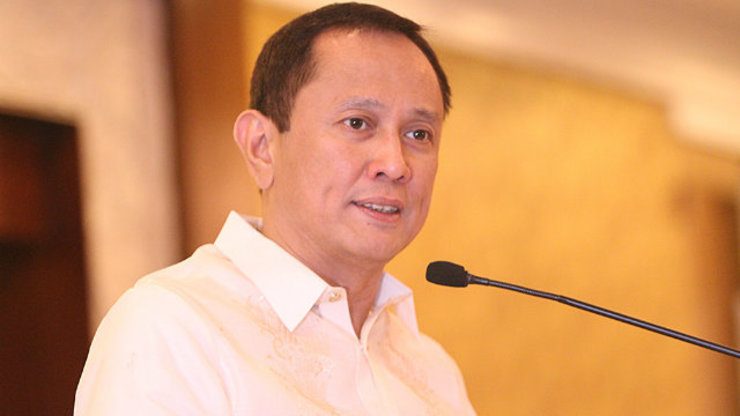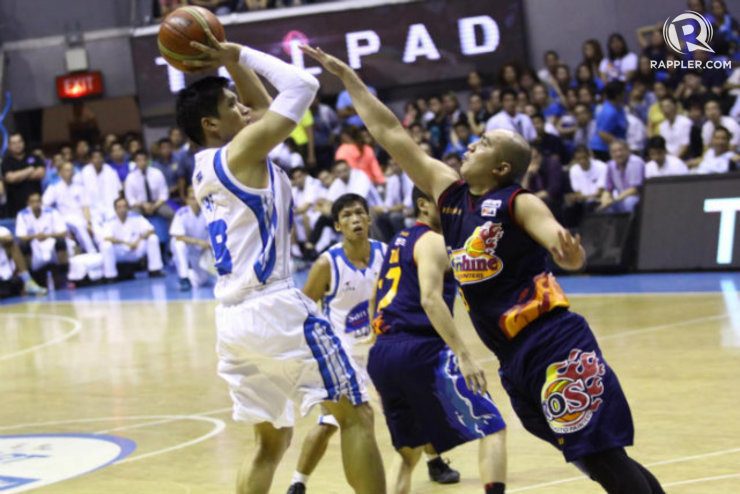SUMMARY
This is AI generated summarization, which may have errors. For context, always refer to the full article.

MANILA, Philippines – Forty years.
To most basketball fans in the Philippines, that may seem like just a number.
After all, watching Philippine Basketball Association games multiple times a week has become a norm for them, which might make it difficult to keep track of how many years the PBA has brought multiple arenas in the Philippines to life, as well as thousands on TV screens in different households across the country’s 7,107 islands.
But it has been 40 years. Four decades since a group of guys envisioned creating a league where the most famous sport in the country could be played at the highest form of competition.
No basketball league in the country, nor in Asia, has lasted as long as the PBA, which opened way back on June 7, 1975 with Cisco Oliver of Mariwasa-Noritake and Ramon Lucindo of Concepcion Carrier taking part in the first every jump ball.
No one knew at that time of uncertainty what the league would turn out to be, but 40 years later, with the rise of many talented athletes and development of modern technology, it looks to be in good hands.
“When the PBA started, we knew na we were at the height of Martial Law,” said PBA Commissioner Atty. Chito Salud during the PBA’s 2014-2015 season press conference on Tuesday, October 7, at the Shangri-La Hotel in Pasig City.
“One can imagine the thousand and one reasons why the PBA’s founding fathers could decide in not daring to dream of putting up the PBA.”
Martial Law during the presidential tenure of former Philippine President Ferdinand Marcos lasted from 1972-1981, during which the country was placed under strict rules and policies, notably with what was mentioned in the press and with public events that took center stage.
Ask any adult into their 50s today about what transpired during that period in time, and most answers will be unpleasant.
Blood was spilled and chaos always seemed imminent.
The PBA and its league’s founding fathers faced many challenges to have their product become a success.
But with responsibility, proper execution, and other aspects, they managed to do just that.
“We are celebrating our 40th year from a position of strength, rather than weakness, and surviving for 40 years in the face of non-stop challenges and stiff competition,” announced Salud, who also expressed thanks to those who built the foundation for the PBA to become the successful association it is today.
“Pasasalamat (giving thanks) that our pioneering generation had the wisdom to lay down the immutable values and principles of integrity of sportsmanship and fair play, and that public and fan interest is paramount.”
“To be clear, not the heavy sense of responsibility,” he later clarified about the PBA’s function. “But the exciting and energizing sense of responsibility – to our founding fathers, to all those who have helped bring us to where we are today – from players, to referees, to coliseum barkers, to ballboys, to the police who help us secure venues, to media, team owners, managers, coaches, players, to our fans, and to our public.”
“It boggles my mind,” he said.
“It humbles me.”
“It inspires me.”
The Present and Future Plans
In the early years of the PBA, the league was dominated by the famed rivalry of Crispa and Toyota. Fans clamored to watch legends like Ramon “El Presidente” Fernandez, Robert Jaworski, Samboy Lim, Bogs Adornado, and Philip Cezar play at a high level on the basketball court.
In the years to follow, the league welcomed more superstars and legends, and opened its arms to Fil-Am players and foreign players that serve as imports. Dynasties such as the 80s Barangay Ginebra San Miguel teams led by Jaworski, late 90s Alaska Aces championship squads of Coach Tim Cone, and many more were formed.

In 2014, the league reached a record for most franchises ever at 12 with the arrival of expansion squads Blackwater Elite and Kia Sorentos, the latter of whom will be coached by multiple-time boxing champion Manny Pacquiao.
Recently, the PBA has also announced that they will include Asian imports in the Governors’ Cup, further innovating the league and heightening the level of competition.
But the improvement and development of the Philippine Basketball Association, though it has already reached a high level especially in terms of popularity and competition, is still far from finished.
“To responsibly and proudly carry the torch that has been handed to us and to pass this torch, burning even brighter, to the next generation of PBA leaders and supporters,” Salud said during the press conference.
“In the PBA, led by its founding fathers and sustained by its pioneering generation, all of us through our collective efforts managed to form something special: a strong, thriving people’s league that makes it very unique and special. It teaches us the lesson that destiny, fame, and future are very much in the hands of people for so long as we are committed to doing the right thing.”
The PBA is also looking at further advancing the in the area of social media and the digital age, according to its commissioner, who says, “We have apps. We are on mobile. Live stats will be available on mobile. We also have live-streaming rights (via TV5).”
The National Basketball Association (the oldest professional basketball league in the world, founded in 1946) has embraced the evolution of digital growth, and the PBA is looking to follow suit.
“In the next two years the PBA will have intents to retain those rights,” said Salud, who adds that the league is planning to launch something similar to NBA League Pass, which is their multimedia platform (with pay) that enables fans to watch any NBA game from anywhere and at any moment.
“We will be pushing TV5 to start giving live-streaming rights for a fee, of course. That belongs to them. And, of course, package it in such a way that they could earn money,” explained the PBA Commissioner.
“You know that is really our dream – to make the PBA available through online – particularly for the young crowd and for our overseas Filipinos who do not have access to a local TV station showing the PBA.”
Though plans to further improve live-streaming may take a while, the league has come up with other ideas to further enhance media coverage and take advantage of social media.
“We’ll have podcasts and radio will be available on the websites. And more articles and more bloggers,” said Salud.
This evolution will further promote what the PBA truly sells: competition, top-notch basketball action, and fan experience.
The league faced many challenges and tribulations during its early days, but has grown into one of the best sports establishments not only in the country, but also on the continent.
“Faced with the risk and uncertainty when it was founded in 1975, the PBA in 40 years has become a source of inspiration and pride to many of us who have seen it grow right before our eyes,” Salud said during the press conference.
“The PBA is an institution far from perfect, and that is what makes it even more exciting. Anchored on the spirit of doing the right things, today on integrity, sportsmanship, and public interest, I’m very confident that the PBA will continue to improve and hopefully break barriers in the next 40 years with new generations of PBA leaders and supporters continuously taking the people’s league to the next level.” – Rappler.com
Add a comment
How does this make you feel?





There are no comments yet. Add your comment to start the conversation.